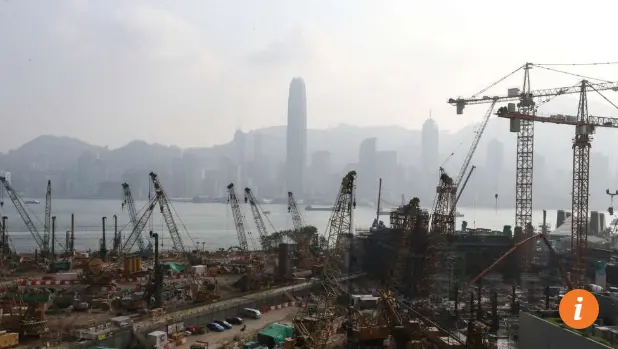It is unlikely the toxic smog that has blanketed swathes of northern China for weeks has affected the Pearl River Delta region significantly, an expert has claimed.
Data from the University of Science and Technology’s Atmospheric and Environmental Database obtained by the Post for Sunday evening – when the air quality health index hit its highest recent levels – suggested that most of the pollutants were generated locally and regionally.
“According to our database, there is no sign of connection between the very high PM2.5 concentration in northern China and that in Hong Kong,” Professor Jimmy Fung Chi-hung, who heads the university’s environment division, said.
Smog from China shrouding Hong Kong poses ‘very high’ health risk
Some media reports over the past few weeks have raised questions as to whether PM2.5 – the tiny particles most hazardous to health – could drift to Hong Kong with the arrival of monsoon winds from the northeast.
Environmental Protection Department assistant director of air policy Mok Wai-chuen last week said “it could not be ruled out” but “was of low possibility” that the smog from the mainland would affect Hong Kong. PM2.5 is a major contributor to smog.
Data showed PM2.5 concentrations were higher in parts of central and northern China, from Beijing and Hebei province to Jiangsu and Shandong provinces.
In provinces further south from Guizhou to Fujian, pollution levels were at times lower than 35 micrograms per cubic metre, the level set as Hong Kong’s annual average target. But some concentrations in southern Guangdong were shown to be as high as they were in the north.
PM2.5 concentrations were as high as 141 micograms per cubic metre of air at 4pm in Tung Chung on Sunday. Levels across northern China are still hovering at around 200 or more.
“If we have a closer look to the data, you will see that the high PM2.5 level is apparently a Pearl River Delta regional issue,” Fung said. “This is because the cooler oceanic water and warmer land temperature usually mix the air pollutants across the border and around the Pearl River Delta region forming a typical air pollution trapping zone throughout the year.”
Vehicles and marine transport account for about 60 per cent of PM2.5 emissions in Hong Kong.
On Sunday, the department said Hong Kong was being affected by an airstream with high background pollution concentrations. Fine, dry weather coupled with light to moderate northerly winds also hindered dispersion of pollutants in the region. Pollution levels hovered at mostly moderate levels across the city on Monday.
(SCMP)
 简体中文
简体中文



